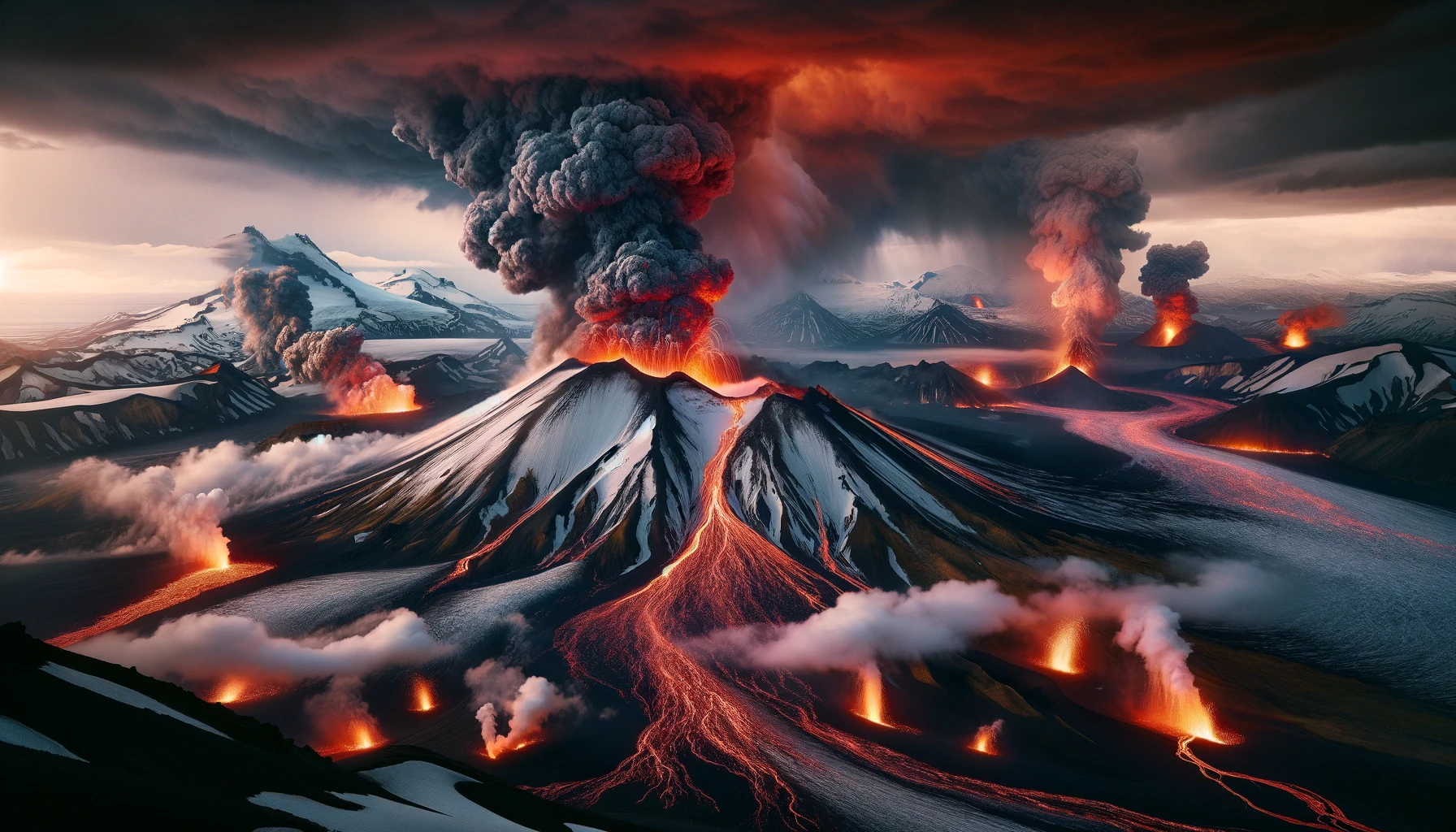Article Title: Iceland’s Volcanic Vigil: A Land Shaped by Fire and Ice
Introduction
Iceland, often dubbed the Land of Fire and Ice, owes its dramatic landscape to its unique geological location. Here, volcanoes aren’t just a part of the scenery; they’re active players in the nation’s story, sometimes with a bit of a temper.
Recent Eruptions: A Fiery Timeline
Let’s talk about recent outbursts. In 2010, Eyjafjallajökull erupted, sending ash clouds so massive they grounded flights across Europe. The volcano, with a name that’s a tongue-twister, reminded the world of Iceland’s fiery nature. Then in 2021, Fagradalsfjall joined the party, offering spectacular lava displays, much to the delight of scientists and Instagrammers alike.
The Likely Suspects
Now, onto the future stars. Katla, lurking under the Mýrdalsjökull glacier, is like a celebrity in the volcano world – always the subject of eruption rumors. Experts keep a watchful eye on it, knowing its history of large, disruptive eruptions. Hekla, another well-known name, is often called ‘The Gateway to Hell,’ which is pretty metal if you ask me. It’s known for its unpredictability and explosive history.
Impact on Iceland
The effects of these volcanic divas are more than just Instagram fodder. They shape the island’s geography, creating rich soils ideal for agriculture in a landscape that often seems too wild to tame. Geothermal energy, a gift from these fiery depths, powers homes and businesses, showcasing how Icelanders harness this volatile nature.
Environmental and Global Impact
Volcanic eruptions in Iceland don’t just stay in Iceland. They can have global consequences, like influencing climate patterns and air travel. Ash clouds from eruptions can spread far, impacting air quality and even cooling global temperatures temporarily.
The Silver Lining
While eruptions can be disruptive, they also offer invaluable insights into Earth’s inner workings. Scientists flock to Iceland like bees to honey, eager to study these natural laboratories. And let’s not forget the tourism boost – who doesn’t want to witness Mother Nature’s fireworks?
Conclusion
Iceland’s volcanoes are a testament to the dynamic and ever-changing planet we call home. They remind us of the power beneath our feet, offering both challenges and opportunities. In Iceland, living with volcanoes is not just a fact of life; it’s a dance with nature, where respect and awe go hand in hand with a healthy dose of caution.
Some Volcano Stats!
- Number of Active Volcanoes: There are about 1,500 potentially active volcanoes worldwide, excluding the continuous belt of volcanoes on the ocean floor. Among these, over 800 have erupted in the past 10,000 years, which is a blink of an eye in geological time.
- Volcanic Eruptions Annually: On average, there are about 50-70 volcanic eruptions every year. This number can vary significantly from year to year.
- Largest Volcanic Eruption: The largest volcanic eruption in recorded history was the 1815 eruption of Mount Tambora in Indonesia. It ejected roughly 100 cubic kilometers of ash and debris into the atmosphere, leading to the “Year Without a Summer” in 1816 due to the impact on global climate.
- Volcano-Related Deaths: Since 1600 A.D., more than 300,000 people have died as a result of volcanic eruptions and their aftermath. The deadliest eruption in recent history was the 1815 eruption of Mount Tambora, which led to the death of around 71,000 people.
- Economic Impact: The 2010 eruption of Eyjafjallajökull in Iceland, although not particularly large, had a significant economic impact due to the disruption of air travel across Europe. The total economic loss was estimated to be between $1.7 billion and $5 billion.
- Volcanoes and Climate Change: Large volcanic eruptions can inject huge quantities of ash and sulfur dioxide into the stratosphere, leading to temporary global cooling. For instance, the 1991 eruption of Mount Pinatubo in the Philippines lowered global temperatures by about 0.5°C for the following two years.
- Geothermal Energy: Volcanic areas are prime spots for geothermal energy production. For example, Iceland, a nation with high volcanic activity, gets more than 25% of its total electricity production from geothermal sources.
- Volcanic Islands: Around 80% of the Earth’s surface, both above and below sea level, is of volcanic origin. Many islands, such as the Hawaiian Islands, are formed entirely by volcanic activity.
These statistics paint a picture of the significant role volcanoes play not just in shaping the Earth’s landscape, but also in impacting climate, human life, and economies worldwide.
